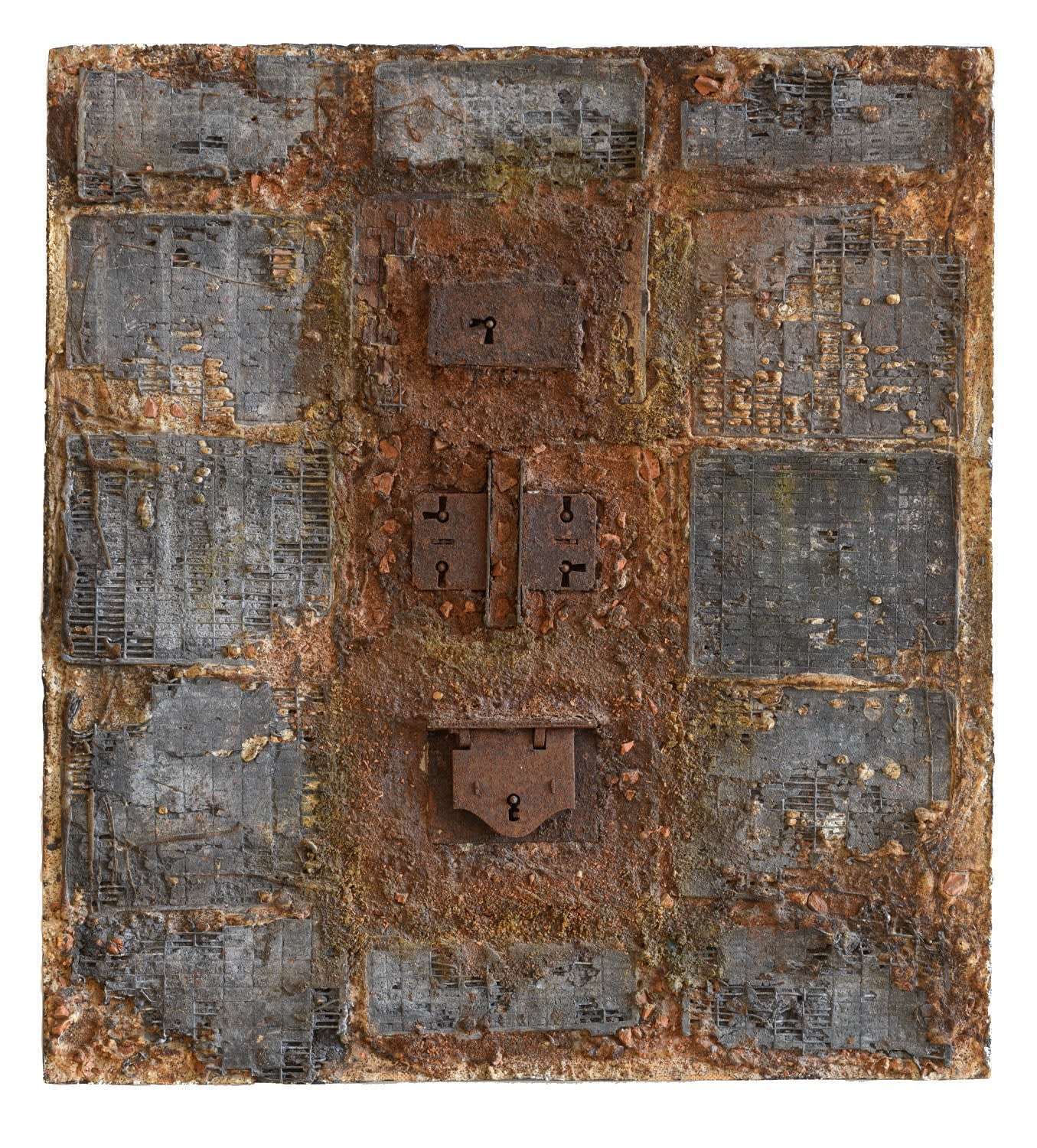-





El castillo de los cerrojos (The Castle of Locks), 1964
Car battery cells, locks, and mixed media assemblage on wood21 5/8 x 19 11/16 in.
55 x 50 cmFurther images
Puerto Cabello, Gramcko’s birth town, was home to the largest population of political prisoners during the Juan Vicente Gómez regime (1908–1935). In 1962, Puerto Cabello became the epicenter of an...Puerto Cabello, Gramcko’s birth town, was home to the largest population of political prisoners during the Juan Vicente Gómez regime (1908–1935). In 1962, Puerto Cabello became the epicenter of an important leftist movement of military insubordination targeted against the government of President Rómulo Betancourt (1959–1964), an event known as “El Porteñazo.” The limited public memory of this event centers on an image by photojournalist Héctor Rondón of a priest holding a gravely wounded soldier. It is no accident that the series of assemblages that Gramcko developed from 1962 to 1965 represents architectures of confinement —castles and cells—which she created using composite techniques and a chromatic palette of chiaroscuros, in which the occasional use of a muted sky-blue or an incandescent red breaks with the dominant gray and black tone.
“The Castle of Locks,” 1964 was selected by Jesús Rafael Soto for the Venezuelan Pavilion at the Venice Biennale in 1964. The composition is dominated by car battery cells combined with rusty locks. The opposites, meaning grids and locks, are used as complementarians within a spatial configuration in which the rational patterns and the oxidized found objects belong to the same order of things. According to the Venezuelan poet, Elizabeth Schön, the use of a light blue pigment alludes to the ocean of Gramcko’s native Puerto Cabello, a city of decay, literally destroyed by the ocean.Exhibitions
Elsa Gramcko: The Invisible Plot of Things, Sicardi | Ayers | Bacino, Houston, TX, May 13 to July 2, 2022.
XXXII Bienalle di Venezia. Venezuelan Pabellion. Venice Italy, 1964.
Elsa Gramcko, Museo de Bellas Artes, Caracas, Venezuela, January to February 1961.
Publications
Rangel Gabriela, Aruna D’Souza. Elsa Gramcko: The Invisible Plot of Things. Published by Sicardi | Ayers | Bacino, James Cohan, printed by Faenza Group, Italy, 2022, p. 63.









